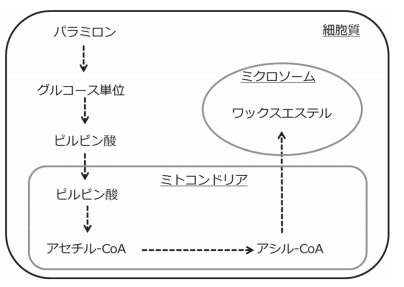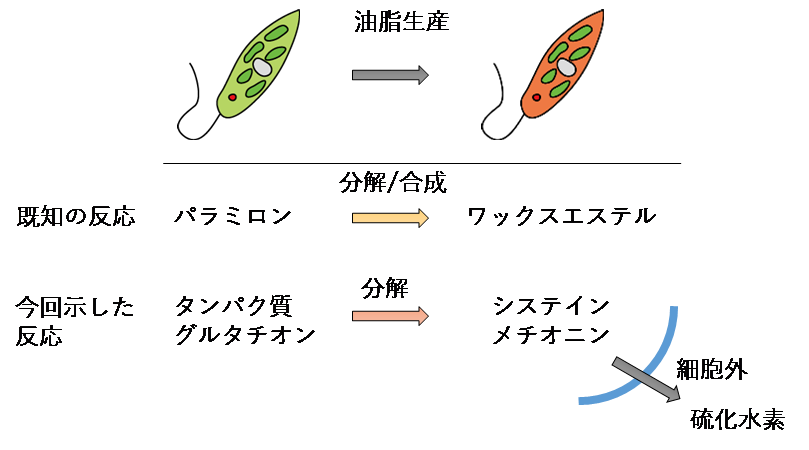
Introduction of Euglena’s unique component, Wax Esters
■Wax esters stored by Euglena within their bodies
Euglena, a type of microalgae, thrives well through photosynthesis even under high concentrations of CO2. Euglena stores a polysaccharide called paramylon within its cells. When exposed to oxygen-deficient conditions, Euglena breaks down this paramylon and produces a lipid known as wax ester within its cells. Wax esters derived from Euglena have a high demand, not only as bio-diesel fuel but also as a source for various applications, including vehicle and jet fuels, candles, and cosmetics.

■Wax Ester Fermentation
The synthesized wax esters consist of saturated fatty acids and alcohols with chain lengths ranging from 10 to 18, primarily composed of myristic acid and myristyl alcohol. Euglena gains energy through the conversion of paramylon into wax esters, a process referred to as "wax ester fermentation."

■Practical Application of Euglena-Derived Diesel
Euglena stores a significant amount of fatty acids or wax esters within its cells, of which wax esters can be directly utilized as bio-diesel. Moreover, shorter-chain fatty acids, with good solidifying properties and oxidation stability, are preferred in industrial production of diesel and kerosene over long-chain fatty acids. Euglena Co., Ltd. supplies conventional bio-diesel fuel (DeuSEL®) derived from Euglena wax esters for use in Isuzu vehicles and shuttle buses for Isuzu employees and guests, achieving over two years of practical application through testing.

■Wax Ester Fermentation and Sulfur Metabolism
Using the sulfur index developed at the University of Tsukuba, it was revealed that the odor generated during wax ester fermentation in Euglena is due to secondary reactions related to sulfur compounds. Through sulfur index analysis, metabolomics was performed concerning sulfur compounds, showing an increase in sulfur-containing amino acids such as cysteine and methionine within the cells due to lipid production. Meanwhile, compounds like glutathione and proteins containing sulfur decreased. Furthermore, molecular analysis indicated that during lipid production in Euglena, the enhancement of the degradation pathway consisting of Dug1p, Dug2p, and Dug3p promotes the breakdown of glutathione. These findings are expected to contribute to the development of technologies that suppress odor generation during lipid production.

